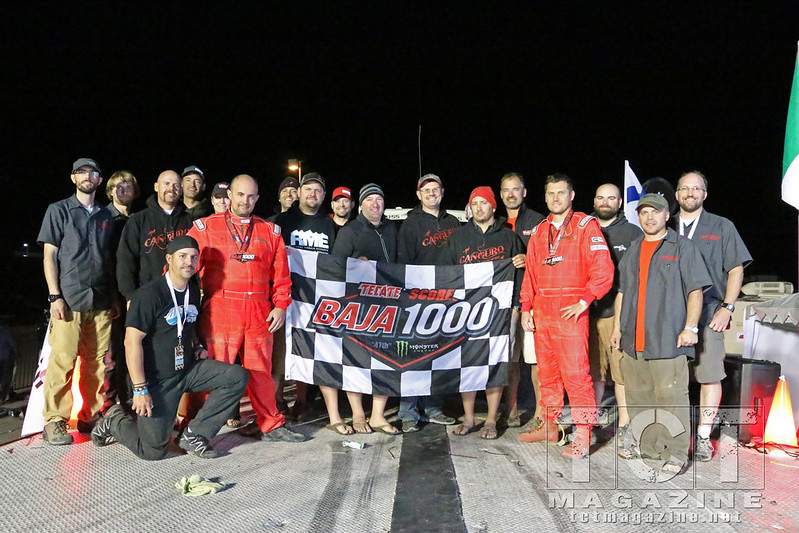Canguro Racing is a team of friends who are all Land Cruiser fanatics, who also have a substantial amount of overland travel experience in several countries across several continents. For the 2014 Baja 1000 the chase crew is made up of six chase vehicles, all Toyotas except for one Chevy Duramax that’s pulling the trailer for the Race vehicle. Each vehicle has anywhere from two to four occupants who will assist at pit stops with anything from checking lug nuts and refueling to checking GoPros or anything else that arises. Each chase vehicle is equipped with a HAM radio to stay in radio contact with other chase vehicles as well as the race truck. The team also has three members called “web racers” who monitor the race from home with their computers using the GPS tracking system that is present on every race vehicle. This system sends out periodic updates from the race vehicle with the race mile and speed the vehicle is travelling. The web racers then forward that information to the chase teams via email or text. These updates are vital to the chase team, especially when the race truck is in areas of the course with no radio contact. These updates are sometimes the only way to know if the vehicle or the drivers are in trouble. Both the racers and the chase team also employ the use of satellite phones in cases of emergency or if they need to contact the web racers from somewhere without cell service.
The chase plan is created by team logistics master, Dave Connors, and has several different pit assignments for each chase vehicle/team through the duration of the race. The chase vehicles will leapfrog each other down the peninsula to handle all the vehicle check-ins, refueling, driver changes, and monitoring radio communications with the race vehicle. The team met together in a basement conference room at Hotel Cortez in Ensenada the night before the race to go over all the details. Dave reviews the entire chase plan with the team so that everyone knows where they need to be and when. Any loose ends get tied up and any last minute changes are noted in a chase book. There is a chase book in every vehicle that includes route maps, pit locations, mileages, and timed distances along the race course as well as maps of the highways down the peninsula. Once everyone is clear on assignments the team struggles to get some sleep amidst the excitement that feels like Christmas morning leading up to the race start the next day.
Related Articles
The other thing many people don’t realize about the Baja 1000 during a peninsula run is the sheer distance each chase team has to cover between assignments. For example, one chase team will set up at a pit location and have a five minute stop when the race vehicle comes to the pit. Then they are back in the chase truck for a four hour drive covering 300 miles just to get to their next assignment where they have another five minute stop, only to hop back into the chase truck for another five hour drive to another assignment. This year’s Baja 1000 covered over 1200 race miles. That is roughly the equivalent of driving from Vancouver, British Columbia to Los Angeles, California and driving that as quickly as possible over surprisingly rough terrain. The chase crews don’t have to cross the same rough terrain, but they do cover a similar distance; once the race is done, they load up and drive it all over again to get back home.
It’s an impressive amount of preparation and coordination that is hard to fathom unless you’ve been part of a race team at an event like the Baja 1000. All of this preparation is what can make the race a success or a failure. Just like any overland travel, there has to be a plan and a goal. The vehicles need to be prepped to ensure they are in top condition; everyone in the group needs to understand the plan and know their role. Like any adventure there are factors beyond your control, but proper planning can help to manage all the things that are within your control, and hopefully avoid those things that are out of your control. For the Canguro Racing team, even though it’s a race and the team tries to be competitive, the primary goal is still to have fun. “If we’re not having fun, we’re doing it wrong.” Overland trips should have the same philosophy. Set your goal, make your plan, get out there, and most importantly, HAVE FUN.
More Photos:
[flickr set=72157648551495083]
To get your copy of the
January 2015 issue:
FIND US ON:









